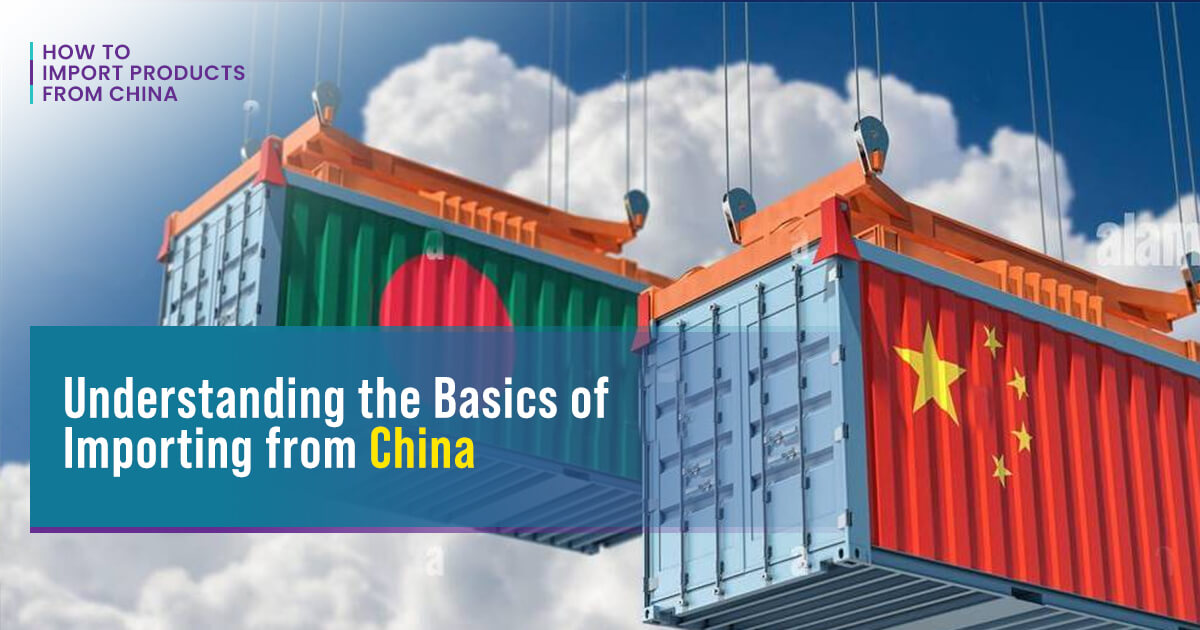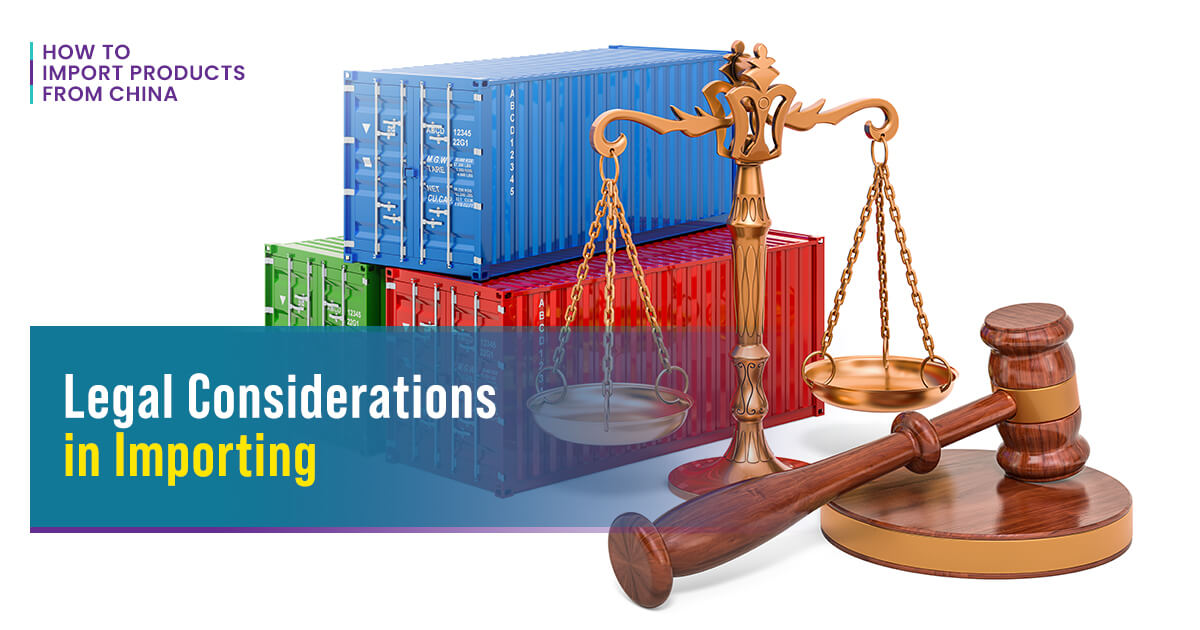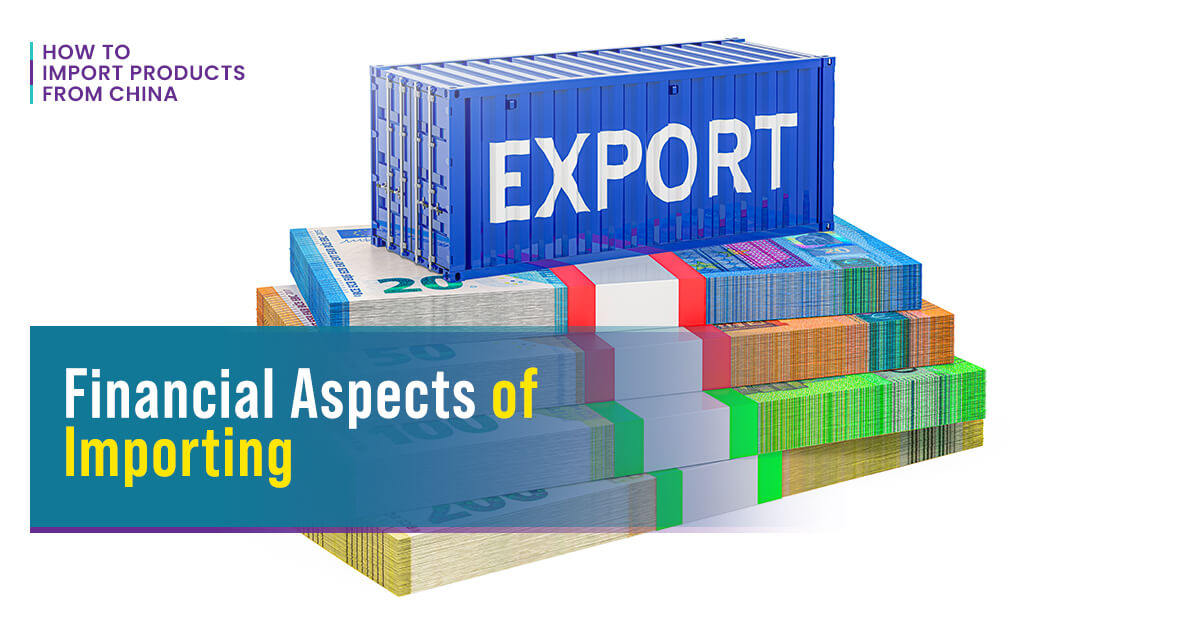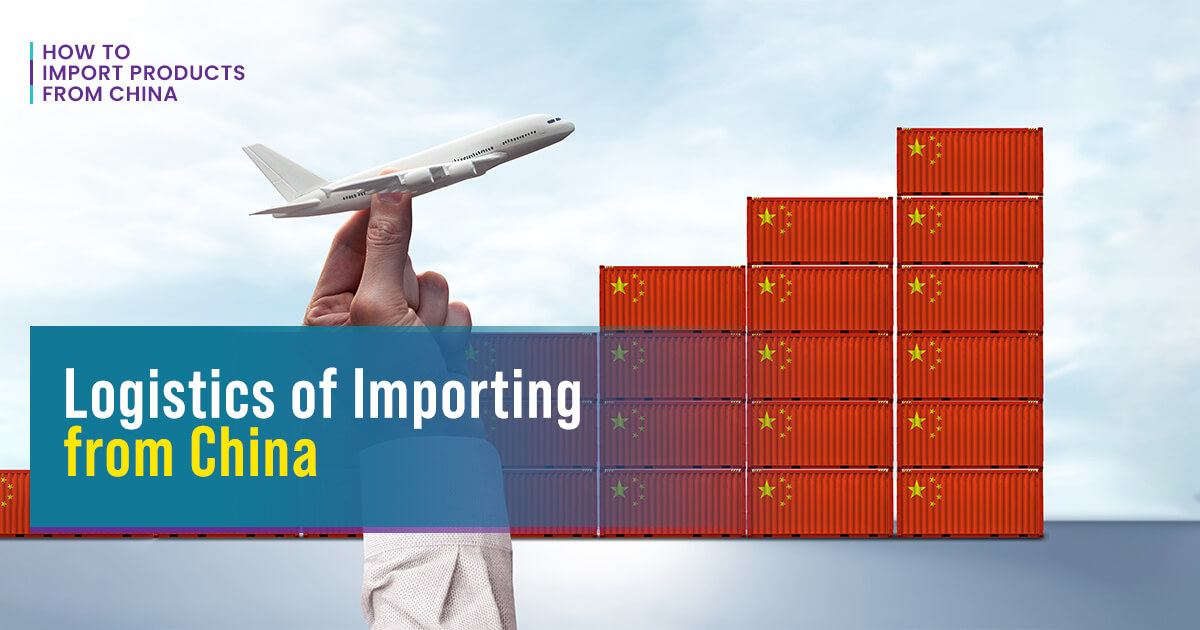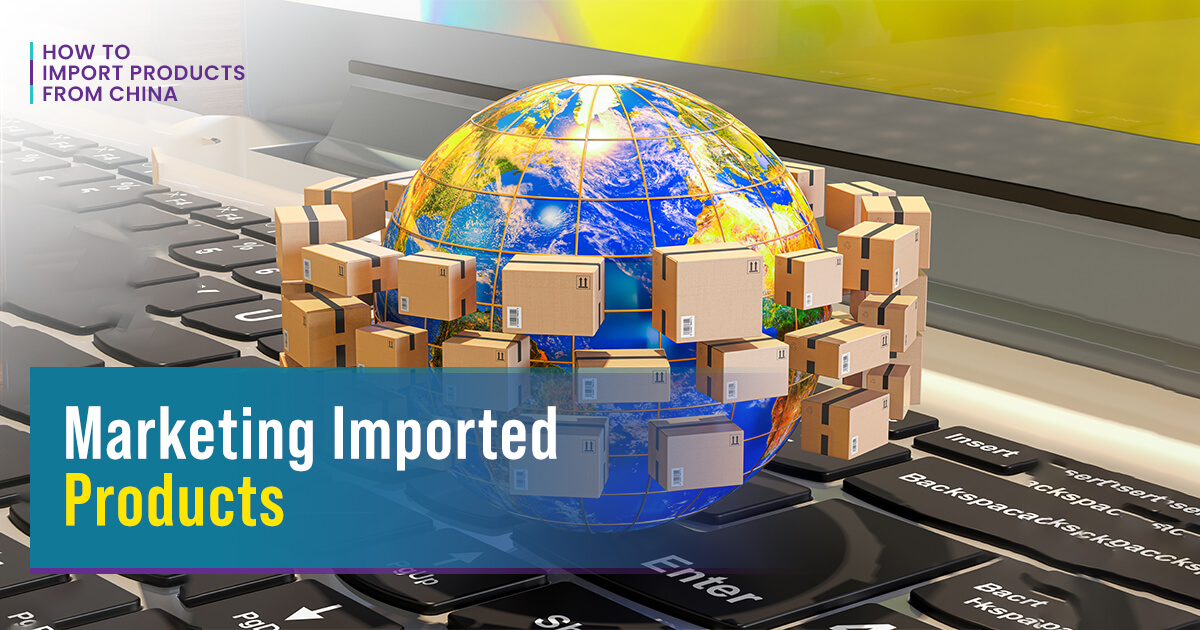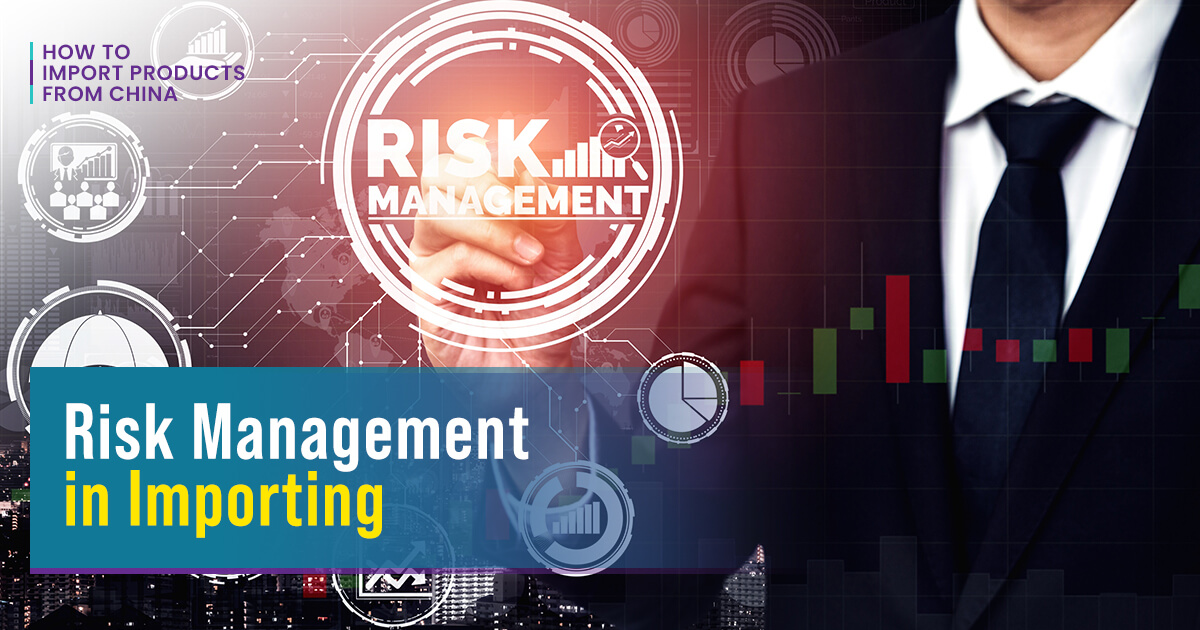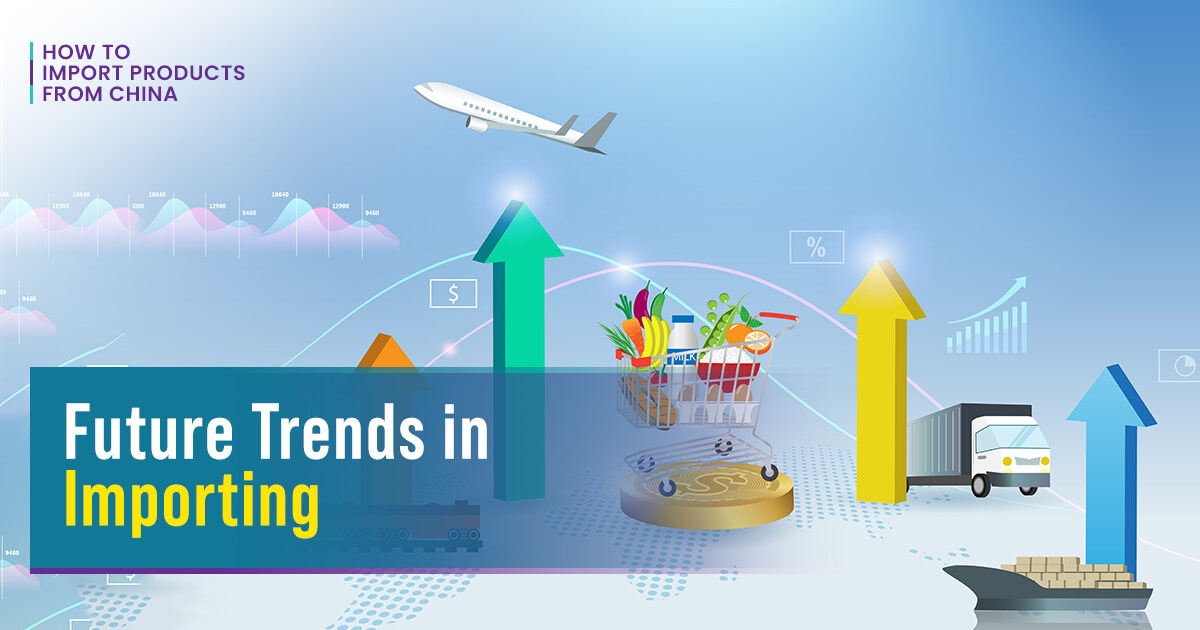Introduction:
Are you an entrepreneur looking to expand your product line or start a new business venture? If so, then the prospect of importing products from China may have crossed your mind. With its vast manufacturing capabilities and diverse range of products, China offers lucrative opportunities for businesses looking to source goods at competitive prices.
However, navigating the complex process of how to import products from China can be daunting without the right guidance. In this comprehensive guide, we will delve into the intricacies of importing products from China, covering everything from finding reliable suppliers to understanding import regulations and managing logistics.
So grab a cup of tea and get ready to embark on an enlightening journey into the world of international trade as we demystify the process of sourcing goods from the manufacturing powerhouse that is China.
[toc]
Understanding the Basics of Importing from China
As the global marketplace continues to expand, importing goods from China has become an increasingly attractive opportunity for businesses seeking cost-effective and high-quality products. However, diving into the world of international trade requires more than just a desire for profit; it demands a comprehensive understanding of the complexities and nuances involved in importing from China. Below we will explore the fundamental aspects of this process, offering valuable insights and guidance for those embarking on this potentially lucrative venture.
Importing from China presents an intriguing blend of challenges and rewards, making it a terrain that demands careful navigation and strategic planning. From navigating complex international regulations to establishing reliable supplier relationships, there are numerous critical considerations that must be meticulously addressed in order to ensure success in this endeavor. By delving into the basics of importing from China, we aim to equip aspiring importers with the knowledge and tools necessary to embark on this journey with confidence and competence.
সুপারি পাতার প্লেট তৈরির মেশিন: একটি স্বপ্নের বাস্তবায়নের যাত্রা
Navigating International Trade Regulations
Navigating international trade regulations is an intricate process that demands careful attention to detail. Understanding the legal requirements and compliance standards is essential for smooth importing operations. The varying regulations across different countries can pose complex challenges, making it crucial for importers to stay informed and up-to-date with the evolving trade policies.
One key aspect of comprehending international trade regulations is understanding the documentation required for customs clearance. Importers must be well-versed in the specific paperwork needed for their goods, such as commercial invoices, packing lists, and certificates of origin. Additionally, compliance with product standards and labeling requirements is vital to ensure adherence to international trade laws.
Furthermore, keeping abreast of tariff classifications and duties on imported goods is critical in determining the overall cost implications of importing products. With shifting geopolitical dynamics influencing trade policies, importers need a comprehensive understanding of regulations to navigate potential changes effectively. In essence, mastering international trade regulations paves the way for a seamless and efficient importing process while minimizing risks associated with non-compliance.
Establishing Your Import Objectives
Setting clear objectives is crucial for the success of any import business. It provides a roadmap and direction for the company, guiding decision-making and resource allocation. When defining your import objectives, it’s important to be specific and measurable. Vague goals can lead to confusion and lack of focus, while clear, quantifiable objectives allow for better tracking and evaluation of progress.
Aligning these objectives with your overall business strategy is essential. By ensuring that your import goals are in sync with your company’s mission and vision, you can create synergy across different departments and functions. Additionally, setting realistic yet challenging targets can motivate employees and drive continuous improvement within the organization. Ultimately, by establishing clear import objectives that are aligned with your broader business strategy, you set the foundation for sustained growth and success in the import industry.
Researching Chinese Markets and Products
When exploring the vast landscape of China’s market, it’s essential to conduct thorough research to identify the right products for your business. Understanding the specific needs and preferences of your target audience is crucial in this process. By delving into consumer behaviors and market trends, you can uncover valuable insights that will guide your product selection strategy.
It’s also important to recognize the competitive dynamics within the Chinese market. Conducting a comprehensive analysis of existing products, their pricing strategies, and their unique selling points can provide valuable benchmarking data. This insight allows you to differentiate your offerings effectively, positioning them as distinctive in a crowded marketplace.
Moreover, establishing strong partnerships with reliable suppliers and manufacturers is vital when navigating the complexities of sourcing products from China. Building trust-based relationships ensures quality control, timely delivery, and cost-effectiveness – all critical factors in achieving long-term success. By prioritizing diligent research and strategic collaborations, businesses can tap into China’s diverse market offerings with confidence and precision.
Identifying Reliable Suppliers
One of the most critical aspects of running a successful import business is identifying reliable suppliers. Without trustworthy partners, businesses risk facing delays, subpar product quality, and even legal issues. To ensure the credibility of potential suppliers, thorough vetting processes are essential.
This can involve scrutinizing their track record, requesting samples for quality assessment, and conducting on-site visits where possible. Establishing strong communication channels and building personal relationships with suppliers can also help solidify trust and ensure smooth operations.
Moreover, diversifying the supplier base is a crucial risk management strategy for import businesses. Relying on a single source for products increases vulnerability to unforeseen disruptions such as geopolitical tensions or natural disasters. By cultivating relationships with multiple reputable suppliers in different locations, businesses can safeguard themselves against supply chain disturbances while promoting healthy competition among their partners.
This approach not only strengthens reliability but also opens doors for potential cost efficiencies and innovation through varied perspectives from diverse markets.
Assessing Product Quality and Compliance
Ensuring product quality and compliance with international standards is a crucial aspect of any business operation. It not only reflects the commitment to producing safe and reliable products but also enhances brand reputation and consumer trust.
To achieve this, it is essential to establish a robust evaluation process that includes thorough testing, validation, and documentation. By conducting comprehensive inspections at every stage of production, businesses can identify and address potential issues early on, ensuring that the end product meets all necessary standards.
Furthermore, implementing a quality management system can streamline the evaluation process by establishing clear guidelines for product development, manufacturing, and post-market surveillance. This systematic approach allows companies to proactively identify areas for improvement while maintaining adherence to international standards.
Additionally, investing in continuous training for employees involved in product assessment can further ensure that they are well-equipped with the latest knowledge and techniques to evaluate product quality effectively. Ultimately, prioritizing stringent evaluation measures not only demonstrates commitment to excellence but also instills confidence in consumers regarding the safety and reliability of the products offered.
Legal Considerations in Importing
When it comes to importing goods, navigating the legal landscape is crucial for success. One of the key considerations is obtaining the necessary licenses and permits. These requirements can vary widely depending on the nature of the imported items, their country of origin, and local regulations. Understanding these nuances and ensuring compliance can prevent delays and costly penalties down the line.
Additionally, tariffs and taxes play a significant role in import operations. These levies are imposed by governments to protect domestic industries or generate revenue but can significantly impact an importer’s bottom line. Navigating through these complexities demands careful strategic planning and a deep understanding of trade agreements, customs regulations, and international tax laws. Engaging with legal experts who specialize in international trade can provide valuable insights and help importers stay compliant while maximizing cost-efficiency.
Import Licenses and Permits
Importing goods from China can be a lucrative endeavor, but it also comes with a significant amount of administrative and legal requirements. One of the most critical aspects to consider is obtaining the necessary import licenses and permits.
These documents are essential for ensuring compliance with regulations and customs procedures, and they vary depending on the type of goods being imported. For instance, products like food, pharmaceuticals, and electronics may require specific licenses tailored to their respective industries.
The costs associated with obtaining these licenses can also fluctuate based on factors such as the type of product, quantity being imported, and any additional regulatory fees.
Navigating the process of obtaining import licenses and permits can be complex, but it’s crucial for ensuring smooth operations within international trade. It’s advisable to research thoroughly or seek professional guidance to understand the specific licensing requirements relevant to your industry.
Additionally, staying updated with any changes in regulations or tariffs can further streamline the licensing process while helping businesses avoid potential risks or delays in importing goods from China.
Understanding Tariffs and Taxes
Understanding Tariffs and Taxes is essential for businesses and individuals involved in importing goods. These charges can significantly impact the cost of imported products, making it crucial to understand how they are calculated and how to manage them effectively. Tariffs are typically calculated based on the value of the imported goods, often expressed as a percentage of the total value or a specific dollar amount per unit.
Additionally, various taxes such as Value Added Tax (VAT) may also be levied on imports. It’s important to have a clear understanding of these charges to accurately budget for import costs.
Furthermore, strategic planning and research into preferential trade agreements and tariff classifications can provide opportunities to minimize these expenses, ultimately improving cost efficiency in import operations. Understanding this complex landscape empowers importers with the knowledge needed to navigate tariffs and taxes effectively, ensuring better financial management in international trade.
Financial Aspects of Importing
As global trade continues to expand, the allure of importing goods from China has become increasingly enticing for businesses seeking cost-effective manufacturing options. However, amid the allure lies a myriad of financial considerations that can significantly impact a company’s bottom line.
From navigating fluctuating exchange rates and calculating import duties to selecting the most suitable payment methods, understanding the financial implications of importing from China is paramount for sustaining profitability in today’s competitive marketplace.
In this comprehensive guide, we delve into the essential financial aspects that businesses must grasp when engaging in imports from China. From analyzing total landed costs and factoring in shipping expenses to evaluating the impact of taxes and tariffs on pricing strategies, this exploration illuminates the intricate web of financial intricacies that underpin successful importing endeavors.
By unraveling these complexities and offering insights into optimizing payment methods and currency management, this article equips readers with indispensable knowledge for navigating the financial terrain of international trade with confidence and acumen.
Calculating Costs and Budgeting
When it comes to importing, one of the most critical factors for success is an accurate calculation of all the costs involved. From sourcing and production expenses to shipping and customs duties, every aspect must be carefully considered.
Effective budgeting is essential for managing these expenses and ensuring that your import venture remains profitable. By thoroughly analyzing each cost component and creating a detailed budget, you can make informed decisions about pricing, investment, and cash flow management.
Furthermore, an in-depth understanding of the financial aspects of importing allows you to anticipate potential challenges and mitigate risks effectively. It’s not just about determining how much money is needed upfront but also about forecasting ongoing expenses to maintain a sustainable operation.
Successful importers proactively manage their finances by regularly revisiting their budgets, monitoring actual expenditure against projected costs, and making adjustments as necessary. This proactive approach ensures that financial resources are allocated efficiently and helps avoid unforeseen financial setbacks along the way.
Payment Methods and Currency Exchange
When it comes to choosing the right payment method, understanding currency exchange becomes vital. Each payment method carries its own set of fees, conversion rates, and security measures. Credit cards offer convenience and protection, but they often come with foreign transaction fees.
On the other hand, using a debit card may result in lower fees, but the exchange rate might not be as favorable. It’s important to consider these factors when deciding on a payment method for international transactions.
Another important consideration is currency exchange options. Avoiding airport kiosks and exchanging money at local banks or reputable exchange bureaus can save significant amounts through better rates and lower fees.
Additionally, utilizing digital services like TransferWise or Revolute can provide competitive exchange rates without physical cash handling. Understanding these differences in currency exchange methods is essential for managing international payments effectively and maximizing value for your money.
Logistics of Importing from China
Importing goods from China can be a lucrative endeavor, but navigating the complex logistics involved can often feel like embarking on a treacherous journey through uncharted waters. From choosing the most efficient shipping methods to understanding the intricacies of customs clearance, importers are faced with a myriad of challenges that require careful planning and expertise to overcome.
Below, we will delve into the intricacies of importing from China, providing invaluable insights and practical advice for successfully navigating these logistical hurdles. Whether you’re a seasoned importer or just dipping your toes into the world of international trade, this article aims to equip you with the knowledge and tools necessary to navigate the intricate web of logistics associated with importing from China.
Choosing the Right Shipping Method
Selecting the right shipping method can significantly impact the success of your business. While standard ground shipping might be cost-effective, it may not always guarantee timely delivery.
For time-sensitive packages, expedited shipping options such as express or overnight delivery might be more appropriate, albeit at a higher cost. In contrast, if you’re focused on reducing transportation expenses and are willing to trade off slightly longer delivery times for lower costs, freight shipping could be a viable option.
Moreover, considering the nature of the products being shipped is crucial when selecting a shipping method. Fragile or perishable items may require specialized handling and faster delivery times to ensure their integrity upon arrival.
Some carriers also offer added services like package tracking and insurance, which can provide peace of mind for both you and your customers. By carefully evaluating these factors against your specific business needs, you can make informed decisions when choosing the most suitable shipping method for your shipments.
Handling Customs Clearance
When importing goods, navigating the customs clearance process can be a complex and time-consuming endeavor. It requires meticulous attention to detail, knowledge of regulations, and effective communication with customs officials. One crucial aspect is ensuring that all necessary documentation is in order, including invoices, packing lists, and any required permits or certificates. Additionally, understanding the tariff classifications and valuation methods for your specific goods is essential to avoid unnecessary delays or extra costs.
To successfully navigate customs clearance, it’s beneficial to engage with experienced customs brokers who are well-versed in the intricacies of import regulations. Their expertise can streamline the process by managing documentation requirements, facilitating inspections if necessary, and providing guidance on compliance issues. Furthermore, staying informed about changes in trade agreements, duty rates, or import restrictions can significantly impact your customs clearance experience.
Overall successful customs clearance ultimately depends on thorough preparation and proactive communication with all parties involved – from suppliers to freight forwarders to customs authorities. By leveraging available resources such as technology platforms for tracking shipments and staying abreast of regulatory updates through industry publications or professional networks can ensure a seamless entry of your goods into your desired destination.
Building Strong Relationships with Chinese Vendors
In today’s global economy, successful importing is not just about securing the best deal on goods; it’s also about building strong and lasting relationships with vendors. Nowhere is this more crucial than when dealing with Chinese vendors, where effective communication, negotiation skills, and an understanding of cultural nuances can make all the difference. As businesses seek to tap into the vast manufacturing capabilities of China, mastering these aspects becomes essential for ensuring smooth and profitable import operations.
Establishing trust and rapport with Chinese vendors goes beyond simply signing a contract; it requires a deep understanding of their culture, business practices, and communication styles. Navigating the complexities of international trade often hinges on the ability to effectively communicate expectations while recognizing and respecting cultural differences. This article explores how astute negotiation skills coupled with cultural sensitivity can pave the way for fruitful partnerships with Chinese vendors, ultimately leading to successful importing ventures.
Communication and Negotiation Skills
Effective communication and negotiation are essential elements when dealing with Chinese vendors. It’s not just about language barriers, but understanding cultural nuances is also crucial for successful dealings. One key strategy is to prioritize building relationships and trust before diving into business discussions. This may involve socializing outside of the office, showing respect for Chinese customs, and demonstrating a genuine interest in their culture.
Another important aspect is to be clear and direct in your communication while still maintaining politeness and diplomacy. In negotiations, it’s vital to understand the concept of saving face in Chinese culture and find ways to present proposals or counteroffers without causing embarrassment or confrontation. Furthermore, being patient and open-minded during discussions can pave the way for mutual understanding and fruitful outcomes in business deals with Chinese vendors.
Cultural Awareness and Etiquette
Understanding Chinese culture and business etiquette is crucial for building successful relationships in the global business landscape. The concept of saving face holds a paramount significance in Chinese culture, emphasizing the importance of preserving one’s reputation and avoiding public embarrassment at all costs.
Therefore, when conducting business with Chinese counterparts, it is essential to demonstrate respect and courtesy by being mindful of their emotions and avoiding confrontational or aggressive behavior.
Moreover, hierarchy and seniority play a fundamental role in Chinese business interactions. Respect for age, authority, and position within the company is ingrained in the cultural fabric of China. Therefore, addressing individuals by their proper titles and demonstrating deference towards senior executives can greatly enhance your standing in Chinese business circles.
Understanding these nuances of Chinese culture can help forge strong connections and foster trust with potential partners or clients from China, ultimately leading to fruitful and enduring business relationships.
Quality Control Measures
In today’s global marketplace, importing goods from China has become a common practice for businesses seeking cost-effective manufacturing and production solutions. However, amidst the allure of lower production costs and vast supplier options, maintaining high standards of quality is an increasingly pressing concern.
The importance of quality control measures cannot be overstated when it comes to importing from China – ensuring that products meet stringent quality standards is not only crucial for consumer satisfaction but also for safeguarding a company’s reputation and bottom line.
Implementing effective quality control measures in the import process is essential for businesses to mitigate risks associated with substandard products and protect their brand integrity. From understanding the intricacies of Chinese manufacturing practices to establishing robust inspection protocols, this section delves into the key considerations and strategies necessary for maintaining high-quality standards when dealing with imports from China. Join us as we explore the critical role of quality control in international trade and uncover practical approaches to uphold excellence in imported goods.
Implementing Inspection Protocols
Setting up robust inspection protocols is a critical step in ensuring the quality and compliance of imported goods. It not only provides assurance to consumers but also safeguards your business against potential risks and liabilities. By implementing thorough inspection protocols, you can identify any discrepancies or non-compliance issues early on in the supply chain, allowing for corrective measures to be taken promptly.
To establish effective inspection processes, it’s important to consider factors such as product specifications, regulatory requirements, and industry standards. This involves creating detailed checklists, conducting regular training for staff involved in inspections, and leveraging technology to streamline the process. Furthermore, collaboration with trusted third-party inspection agencies can provide an added layer of expertise and impartial assessment.
In today’s global market, where consumer expectations are high and regulations are constantly evolving, setting up robust inspection protocols is essential for maintaining a competitive edge. This proactive approach not only minimizes the risk of receiving substandard goods but also demonstrates your commitment to quality and compliance throughout the supply chain. With stringent inspection protocols in place, you can uphold your reputation, build trust with consumers, and ensure the success of your importation process.
Managing Defects and Returns
Managing defects and returns in the importing process is a critical aspect of maintaining customer satisfaction and a positive reputation in the market. Firstly, it’s important to have a clear and transparent return policy in place that outlines the procedures for handling defective products.
Offering prompt and hassle-free returns not only builds trust with customers but also presents your business as reliable and customer-centric. Additionally, investing in quality control measures at the source can help minimize defects before products even enter the supply chain, saving both time and resources in managing returns.
Furthermore, leveraging data analytics to identify trends in product defects can provide valuable insights into areas that may require improvement or further inspection. This proactive approach allows importers to address underlying issues before they escalate into widespread problems, ultimately reducing return rates.
Lastly, fostering open communication channels with suppliers is crucial for promptly addressing any product defects or quality concerns. Collaborating with suppliers to establish mutually beneficial solutions demonstrates a commitment to delivering high-quality products while also mitigating potential future issues.
Marketing Imported Products
Once you’ve successfully imported products, the next crucial step is marketing them effectively. One strategy for maximizing the visibility and desirability of imported products is through strategic branding. By creating a unique and compelling brand identity for your products, you can set them apart in the market and appeal to your target audience. This could involve carefully selecting brand names, logos, packaging designs, and messaging that resonate with your ideal customers while also communicating the value and quality of the imported goods.
Empower Your Career: Join High-impact Professional Development Courses in Bangladesh
Positioning plays a vital role in differentiating imported products from local or other competing offerings. Highlighting the unique features, benefits, or origins of the imported items can help position them as premium, exclusive, or superior options within their category. Leveraging social proof and endorsements from influential figures in both the home country and new market can further enhance perceived value and credibility. Additionally, emphasizing any ethical sourcing practices or sustainability initiatives can align with growing consumer preferences for socially responsible products while also setting a positive brand image.
By strategically implementing these branding, positioning, and leveraging strategies into your marketing approach for imported products, you can effectively capture attention in new markets and drive success for your business.
Branding and Positioning Strategies
Developing a strong brand involves more than just creating a catchy logo or tagline. It requires a deep understanding of your target audience, their needs, and the competitive landscape. By conducting thorough market research and employing analytics tools, you can gain valuable insights into consumer behavior and preferences, which will help you position your products effectively in the market.
One effective strategy is to focus on the unique value proposition of your products or services. What sets you apart from the competition? Whether it’s superior quality, innovative features, or exceptional customer service, identifying and highlighting these strengths will help build a distinct brand identity that resonates with consumers. Additionally, consistent messaging across all marketing channels reinforces this positioning and enhances brand recognition.
Moreover, leveraging storytelling as part of your branding strategy can create an emotional connection with your target audience. By weaving narratives that showcase the benefits of your products in real-world scenarios or demonstrate how your brand aligns with their values, you can engage potential customers on a deeper level. This humanizes your brand and differentiates it from competitors who may solely rely on product features and pricing as their selling points.
Leveraging Online Platforms
Online marketing platforms provide an excellent avenue for promoting and selling imported products to a global audience. By leveraging the reach and targeting capabilities of platforms such as Facebook, Instagram, and Google Ads, businesses can effectively showcase their imported offerings to potential customers worldwide. Utilizing compelling visuals, persuasive ad copy, and strategic targeting, these platforms enable businesses to create tailored campaigns that resonate with specific market segments.
Furthermore, online marketing platforms offer robust analytics tools that provide valuable insights into consumer behavior and campaign performance. This data allows businesses to refine their marketing strategies for imported products, optimize ad spend, and identify new opportunities for growth. By closely monitoring key metrics such as click-through rates, conversion rates, and return on ad spend (ROAS), companies can make informed decisions to maximize the impact of their marketing efforts.
In addition to social media and search engine marketing, online marketing platforms also include e-commerce marketplaces such as Amazon and eBay. These platforms serve as powerful channels for reaching international customers interested in purchasing imported goods. Leveraging features like sponsored product ads and targeted promotions enables businesses to increase visibility amidst a competitive landscape while driving sales for their imported product lines. Overall, by harnessing the capabilities of online marketing platforms effectively, businesses can expand their reach into new markets and capitalize on the growing demand for high-quality imported products.
Risk Management in Importing
Importing goods can be a lucrative endeavor for businesses seeking to expand their product offerings and reach new markets. However, the process is not without its challenges, as importing involves navigating a complex web of risks that can impact the financial health and reputation of a company. From supply chain disruptions to regulatory compliance issues, the potential pitfalls are numerous.
Below, we will delve into the world of risk management in importing, exploring crucial strategies for identifying and mitigating these risks while also ensuring legal safeguards are in place. By understanding and effectively managing these risks, businesses can safeguard their operations and pave the way for sustainable growth in an increasingly globalized marketplace.
Identifying and Mitigating Risks
When importing from China, it’s essential to understand and mitigate the associated risks. Identifying potential risks is the first step in this process, which can include quality control issues, intellectual property infringement, supply chain disruptions, and compliance with regulatory standards. To address these challenges effectively, businesses need to develop a comprehensive understanding of their specific import requirements and work closely with trusted partners in China.
Implementing effective risk mitigation strategies involves meticulous planning and a proactive approach. This may entail conducting thorough due diligence on suppliers, establishing clear contractual agreements that outline quality standards and IP protections, and implementing robust quality control processes throughout the supply chain.
Additionally, staying informed about changes in regulations and market conditions can help businesses adapt their import strategies accordingly. By being vigilant and proactive in identifying potential risks upfront and implementing targeted mitigation measures as part of their import processes, businesses can navigate the complexities of importing from China with greater confidence.
Understanding the intricacies of importing from China is crucial for any business looking to capitalize on global trade opportunities while mitigating potential risks. With a clear understanding of how to identify these risks and implement safeguards against them, businesses can forge more secure and sustainable partnerships with Chinese suppliers.
Insurance and Legal Safeguards
Protecting your business with insurance and legal safeguards is crucial in today’s complex and litigious business environment. Whether you are a small start-up or an established corporation, having the right insurance coverage can make the difference between surviving a disaster and facing financial ruin. From property insurance to liability coverage, there are various options available to tailor protection for your specific circumstances.
Supercharge Your Business: Explore The Top 20 BPO Services in Bangladesh
In addition to insurance, implementing legal safeguards such as contracts, agreements, and compliance protocols is essential for mitigating risks and ensuring regulatory adherence. By working with experienced legal counsel, businesses can proactively address potential liabilities and minimize exposure to lawsuits or disputes.
Taking a strategic approach to integrating both insurance and legal safeguards into your business operations not only provides tangible protection but also instills confidence among stakeholders, fostering a culture of security and trust.
Future Trends in Importing
In the fast-paced world of international trade, staying ahead of future trends is not just an option, but a necessity for the longevity and success of your import business. As technological advancements continue to reshape global commerce, and trade dynamics evolve in response to geopolitical shifts, it’s imperative for importers to anticipate and adapt to these changes. From the rise of automation and artificial intelligence in logistics to the impact of shifting consumer preferences on product demand, the landscape of importing is constantly evolving.
In this section, we will delve into upcoming technological innovations and changes in global trade dynamics that could significantly impact your import business, equipping you with valuable insights to navigate the ever-changing terrain of international commerce.
Technological Innovations
The future of importing is on the brink of a technological revolution, with emerging innovations poised to streamline and optimize the entire process. One such innovation is blockchain technology, which has the potential to enhance transparency and security within global supply chains. By creating an immutable ledger of transactions, blockchain can reduce the risk of fraud and errors while increasing trust and efficiency in international trade.
Another game-changing technology is artificial intelligence (AI), which can analyze massive amounts of data to optimize import logistics and forecasting. AI-powered predictive analytics can help businesses make smarter decisions by anticipating demand, optimizing inventory levels, and identifying cost-saving opportunities.
Additionally, advancements in autonomous vehicles and drones offer the potential to transform transportation networks, enabling faster and more efficient delivery of imported goods. These technologies have the power to reshape the future landscape of importing by driving greater efficiency, accuracy, and speed in global trade operations.
Global Trade Dynamics
The landscape of global trade is in a constant state of flux, molded by a multitude of powerful forces. Political changes, such as shifts in leadership or geopolitical tensions, have an undeniable impact on the direction and stability of global trade. Economic policies also play a pivotal role, as governments and international organizations implement new regulations and tariffs to protect domestic industries or stimulate economic growth. Additionally, regional trade agreements exert significant influence, creating networks of alliances and dependencies that reshape the flow of goods and services across borders.
Furthermore, technological advancements are revolutionizing global trade dynamics by enabling more efficient supply chains and opening up new markets for businesses worldwide. The rise of e-commerce platforms has significantly transformed consumer behavior, further altering the traditional patterns of international trade. Consequently, these developments underscore the need for businesses to continually adapt their strategies to remain competitive in this ever-evolving landscape.
Frequently Asked Questions for Import Products from China
What are the key legal requirements for importing from China?
When importing from China, there are several key legal requirements that must be considered to ensure a smooth and compliant process. Firstly, it is essential to understand the import regulations and documentation required by both the Chinese government and your own country’s customs authorities. This may include obtaining an import license or permit, as well as providing accurate and detailed product information.
Additionally, compliance with product safety and quality standards is crucial when importing from China. This involves ensuring that the products meet the regulatory requirements of your country, including certifications, labeling, and testing. It is also important to be aware of any trade restrictions or tariffs that may apply to your imported goods, as these can impact the cost and feasibility of importing from China.
Overall, staying informed about legal requirements and seeking professional guidance can help navigate the complexities of importing from China successfully.
How do I find reliable suppliers in China?
Finding reliable suppliers in China can be a challenging task, but there are several strategies that can help you identify trustworthy partners. One approach is to attend trade shows and industry events in China, where you can meet potential suppliers face-to-face and assess their credibility. Additionally, leveraging online platforms such as Alibaba and Global Sources can provide access to a wide range of suppliers and allow for thorough vetting through customer reviews and ratings.
Another important step in finding reliable suppliers in China is to conduct thorough due diligence on the companies you are considering working with. This may involve requesting references from past clients, conducting factory audits, and verifying certifications and compliance with industry standards. Building strong relationships with potential suppliers through open communication and regular visits can also help establish trust and ensure a successful partnership. By combining these strategies, you can increase the likelihood of finding reliable suppliers in China for your business needs.
What are the best payment methods for importing from China?
When importing from China, it’s important to consider the most secure and efficient payment methods. One of the best options is using a letter of credit (LC), which provides protection for both the buyer and the seller. With an LC, the buyer’s bank guarantees payment to the seller upon presentation of compliant shipping documents, reducing the risk for both parties.
Another reliable payment method for importing from China is using an escrow service. This involves a trusted third party holding funds on behalf of the buyer until the goods are received and inspected. Escrow services provide a level of security and assurance for both parties, making it a popular choice for international transactions.
In addition to LCs and escrow services, some importers also opt for bank transfers or online payment platforms like PayPal or Alipay. However, it’s crucial to carefully evaluate the reliability and security of these methods before proceeding with any payments. Ultimately, choosing the best payment method for importing from China depends on factors such as transaction size, level of trust, and risk tolerance.
How can I ensure product quality when importing from China?
Ensuring product quality when importing from China requires a proactive approach and thorough due diligence. Start by thoroughly researching potential suppliers, verifying their credentials, and requesting samples to assess the quality of their products. It’s crucial to conduct factory inspections and audits to ensure that the supplier meets your quality standards and operates ethically.
Additionally, establishing clear and detailed product specifications is essential for communicating your quality requirements to the supplier. Implementing a robust quality control process, including pre-shipment inspections and testing, can help identify any issues before the products are shipped. Finally, building a strong relationship with your Chinese suppliers based on open communication and mutual trust can also contribute to ensuring consistent product quality over time.
What are the common challenges in importing from China and how can they be overcome?
Importing from China comes with several common challenges that businesses need to be aware of. One of the main challenges is quality control, as it can be difficult to ensure that products meet your standards when dealing with overseas suppliers. To overcome this challenge, it’s important to conduct thorough due diligence on potential suppliers, including factory visits and product inspections. Building strong relationships and clear communication channels with your suppliers can also help in maintaining quality control.
Another challenge is navigating the complex logistics and customs procedures involved in importing from China. This includes understanding shipping options, import duties, and regulations. To address this challenge, working with experienced freight forwarders or customs brokers can provide valuable expertise in managing the logistics of importing goods from China. Additionally, staying updated on trade policies and seeking guidance from industry associations or government resources can help businesses navigate these complexities more effectively.
How has COVID-19 affected importing from China?
COVID-19 has significantly impacted importing from China in several ways. The pandemic led to widespread disruptions in the global supply chain, causing delays and shortages of goods. Many Chinese factories had to shut down or operate at reduced capacity, leading to production slowdowns and increased lead times for imported products. This has resulted in challenges for businesses that rely on imports from China, including higher costs, logistical complications, and uncertain delivery schedules.
Furthermore, the implementation of strict health and safety measures such as quarantine requirements and testing protocols has added additional layers of complexity to importing from China. These measures have not only increased the time it takes for goods to clear customs but have also raised concerns about potential contamination of imported products. As a result, businesses have had to adapt their import strategies by diversifying sourcing options, renegotiating contracts with suppliers, and implementing more robust risk management protocols to navigate the evolving landscape of importing from China during the COVID-19 era.
People Also Ask About Import from China to Bangladesh
What are the Basic Requirements for Importing Products from China to Bangladesh?
The basic requirements for importing products from China to Bangladesh include obtaining an import registration certificate (IRC) and an export registration certificate (ERC) from the Chief Controller of Imports and Exports. Additionally, a valid trade license from the local government authorities is needed to engage in import activities. It is also important to comply with the customs regulations and procedures, which may include obtaining a customs clearance certificate and adhering to specific import duties and taxes.
In addition, it’s crucial to ensure that the imported products meet the quality standards set by the Bangladesh Standards and Testing Institution (BSTI). This may involve obtaining product certification or testing reports to demonstrate compliance with safety and quality requirements. Lastly, having a clear understanding of the documentation required for import transactions, such as commercial invoices, packing lists, and bill of lading, is essential for a smooth import process from China to Bangladesh.
How Can I Find Reliable Suppliers in China from Bangladesh?
Finding reliable suppliers in China from Bangladesh can be a daunting task, but with the right approach, it is definitely achievable. One effective method is to attend trade shows and exhibitions in China, where you can meet potential suppliers face-to-face and establish personal connections. Another option is to use online sourcing platforms such as Alibaba or Global Sources, which offer a wide range of suppliers and allow you to verify their credibility through customer reviews and ratings.
Additionally, hiring a local agent or sourcing company in China can greatly facilitate the process of finding reliable suppliers. These professionals have local knowledge and expertise that can help you navigate the complexities of sourcing from China and ensure that you are connected with trustworthy and reputable suppliers. By leveraging these strategies, you can increase your chances of finding reliable suppliers in China from Bangladesh and build successful business relationships for the long term.
What are the Common Pitfalls in Importing from China to Bangladesh and How to Avoid Them?
Common pitfalls in importing from China to Bangladesh include issues with quality control, communication barriers, and logistical challenges. To avoid these pitfalls, it is crucial to thoroughly vet potential suppliers in China by conducting factory visits and requesting samples before placing large orders. Clear and detailed communication with suppliers is also essential to ensure that product specifications are understood and met. Additionally, working with experienced freight forwarders can help navigate the complex logistics of importing goods from China to Bangladesh.
Another common pitfall is navigating the legal and regulatory requirements for importing goods into Bangladesh. To avoid potential issues, it is important to familiarize yourself with the import regulations and work with local customs agents who have expertise in navigating the import process. Ensuring compliance with all relevant regulations and obtaining necessary permits and certifications will help avoid delays or complications during the importation process.
Are There Any Specific Import Tariffs or Taxes for Goods Imported from China to Bangladesh?
Yes, there are specific import tariffs and taxes for goods imported from China to Bangladesh. The Bangladeshi government imposes various tariffs and taxes on imported goods, including those from China. These include customs duties, value-added tax (VAT), supplementary duty, regulatory duty, and advance income tax.
The specific rates for these tariffs and taxes vary depending on the type of goods being imported and their classification under the Harmonized System (HS) code. It is important for importers to thoroughly research and understand the applicable tariffs and taxes before importing goods from China to Bangladesh in order to accurately calculate the total cost of importing the goods.
Additionally, consulting with a qualified customs broker or trade expert can help ensure compliance with all relevant regulations and minimize unexpected costs.
What is the Best Way to Handle Shipping and Logistics from China to Bangladesh?
The best way to handle shipping and logistics from China to Bangladesh is to work with a reputable freight forwarder or logistics company that specializes in international shipping. By partnering with experienced professionals, you can ensure that your goods are transported efficiently and securely from the point of origin in China to their destination in Bangladesh.
It’s important to consider factors such as transit time, cost, customs clearance, and any specific requirements for your shipment. A reliable logistics provider can help you navigate these considerations and provide tailored solutions to meet your shipping needs. Additionally, staying informed about any regulations or trade agreements between China and Bangladesh can also help streamline the shipping process.
Ultimately, by leveraging the expertise of a trusted logistics partner and staying informed about relevant regulations, you can effectively manage the shipping and logistics process from China to Bangladesh. This approach will help minimize potential delays or issues while ensuring that your goods reach their destination in a timely manner.
How Can I Ensure the Quality of Products Imported from China?
Ensuring the quality of products imported from China involves several key steps. First, it’s crucial to thoroughly research and vet potential suppliers before making any purchasing decisions. Look for companies with a strong track record of producing high-quality goods and positive customer feedback.
Secondly, consider conducting on-site inspections or hiring a third-party inspection service to assess the quality of the products before they are shipped. This can help identify any potential issues and ensure that the products meet your specifications and standards.
Finally, establishing clear quality control measures in your purchase agreements with suppliers can help mitigate risks and provide recourse in case of any quality issues. By taking these proactive steps, you can increase the likelihood of receiving high-quality products from China.
What Payment Methods are Recommended for Transactions with Chinese Suppliers?
When conducting transactions with Chinese suppliers, it is recommended to use secure and reliable payment methods to ensure a smooth and safe process. One of the most commonly used payment methods for transactions with Chinese suppliers is bank transfers, which provide a direct and traceable way to transfer funds. Additionally, using payment platforms such as Alibaba’s Trade Assurance or Bank LC can offer added buyer protection and help facilitate secure transactions.
It is important to consider the specific needs and preferences of both parties when choosing a payment method for transactions with Chinese suppliers. Some suppliers may prefer certain payment methods over others, so open communication and mutual agreement on the chosen method are key to successful transactions.
Overall, prioritizing security, reliability, and mutual understanding when selecting a payment method can help establish trust and foster positive business relationships with Chinese suppliers.
How Can Language and Cultural Differences Impact the Import Process?
Language and cultural differences can have a significant impact on the import process. Language barriers can lead to misunderstandings and miscommunication between importers and exporters, resulting in delays, errors, and additional costs. It is crucial for importers to ensure clear and effective communication with their overseas partners to avoid such issues.
Cultural differences can also affect the import process by influencing business practices, negotiation styles, and decision-making processes. Understanding and respecting the cultural norms of the exporting country is essential for building strong relationships and conducting successful import transactions. Importers should invest time in learning about the cultural nuances of their trading partners to navigate potential challenges and build trust in international trade relationships.
What Legal Considerations Should I Keep in Mind When Importing from China to Bangladesh?
When importing from China to Bangladesh, there are several important legal considerations to keep in mind. Firstly, it is crucial to understand the import regulations and customs requirements of both China and Bangladesh. This includes obtaining the necessary permits, licenses, and certifications for your imported goods.
Additionally, it is important to be aware of any trade agreements or tariffs that may impact the import process between the two countries. Understanding the tax implications and duty rates can help you accurately calculate the total cost of importing goods from China to Bangladesh. Finally, ensuring compliance with intellectual property laws and product safety standards is essential to avoid any legal issues during the importation process.
Where Can I Find Training and Resources for Importing from China in Bangladesh?
If you’re looking for training and resources for importing from China in Bangladesh, there are several options available to help you navigate the process. One option is to seek out local trade organizations or chambers of commerce that may offer workshops or seminars on importing and international trade. These can provide valuable insights and connections to help you get started.
Another option is to explore online resources and courses specifically tailored to importing from China. There are many e-learning platforms that offer courses on international trade, customs regulations, and sourcing from China. These can provide comprehensive training and guidance on the specific challenges and opportunities of importing from China to Bangladesh.
Additionally, reaching out to experienced importers or industry professionals for mentorship or networking opportunities can also be a valuable way to learn about best practices and gain practical insights into the import process. By combining these resources, you can build a strong foundation for successful importing from China in Bangladesh.
How to Create an Online Course: A Comprehensive Guide for Success
Conclusion:
In conclusion, importing products from China can be a lucrative and rewarding endeavor if approached with a comprehensive understanding of the process and careful planning. By following the essential steps and strategies outlined in this guide, importers can minimize risks, navigate legal and logistical challenges, and maximize the potential for success.
From selecting reputable suppliers to managing customs clearance and transportation, each aspect of the importation process requires attention to detail and thorough research. With dedication, perseverance, and a commitment to quality, importers can build successful partnerships with Chinese suppliers and bring high-quality products to global markets. Embracing these principles will undoubtedly pave the way for a prosperous and sustainable importing venture.


